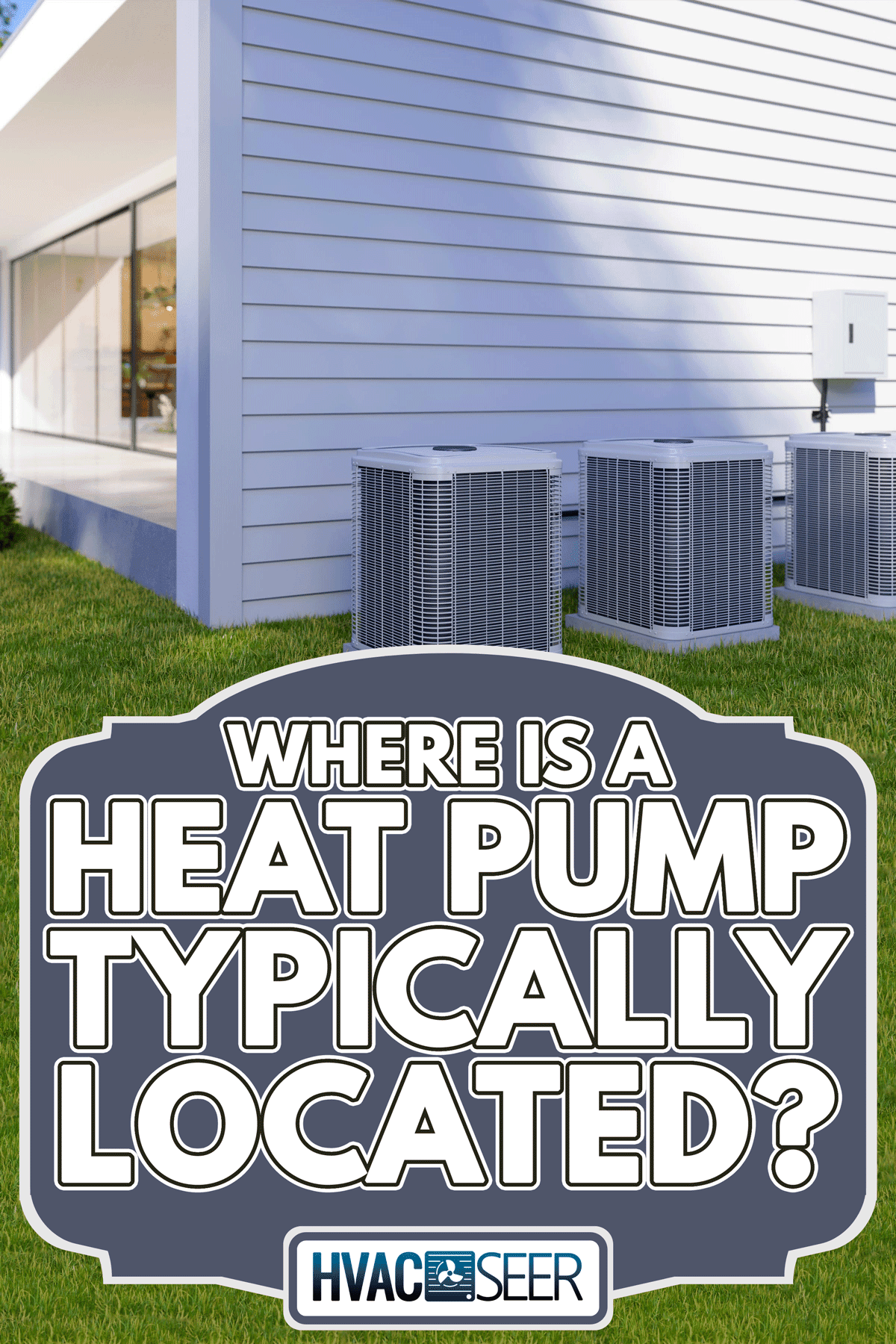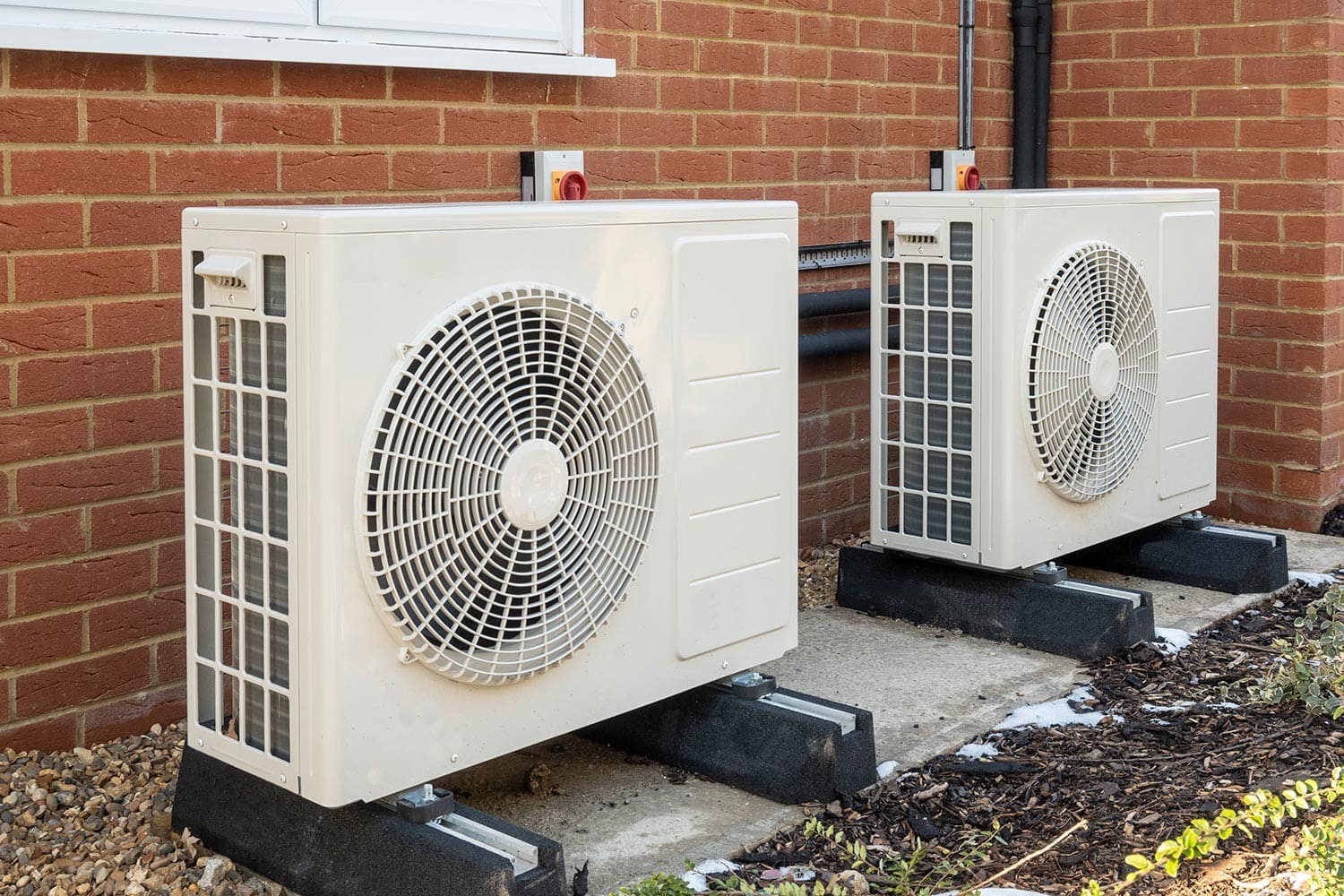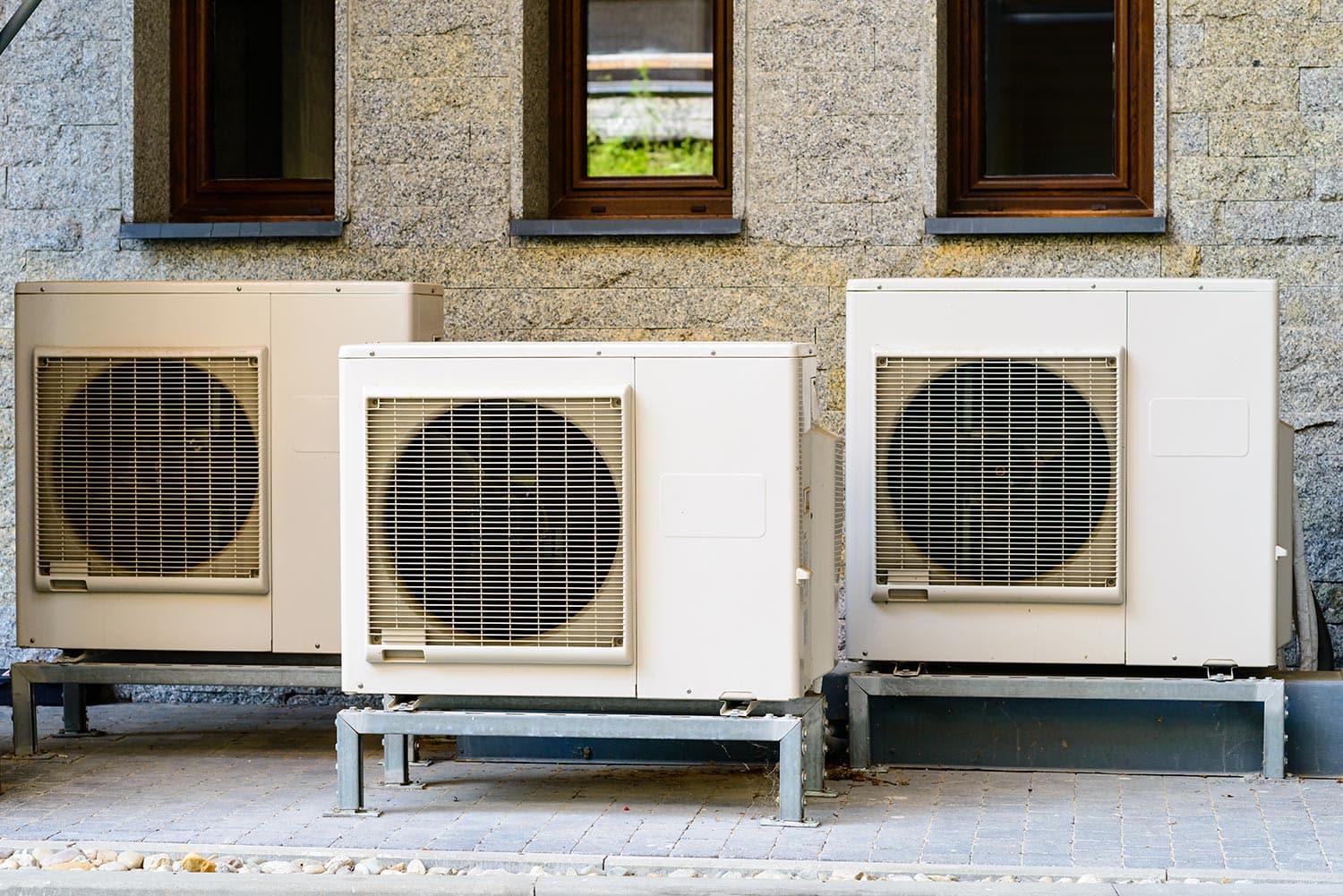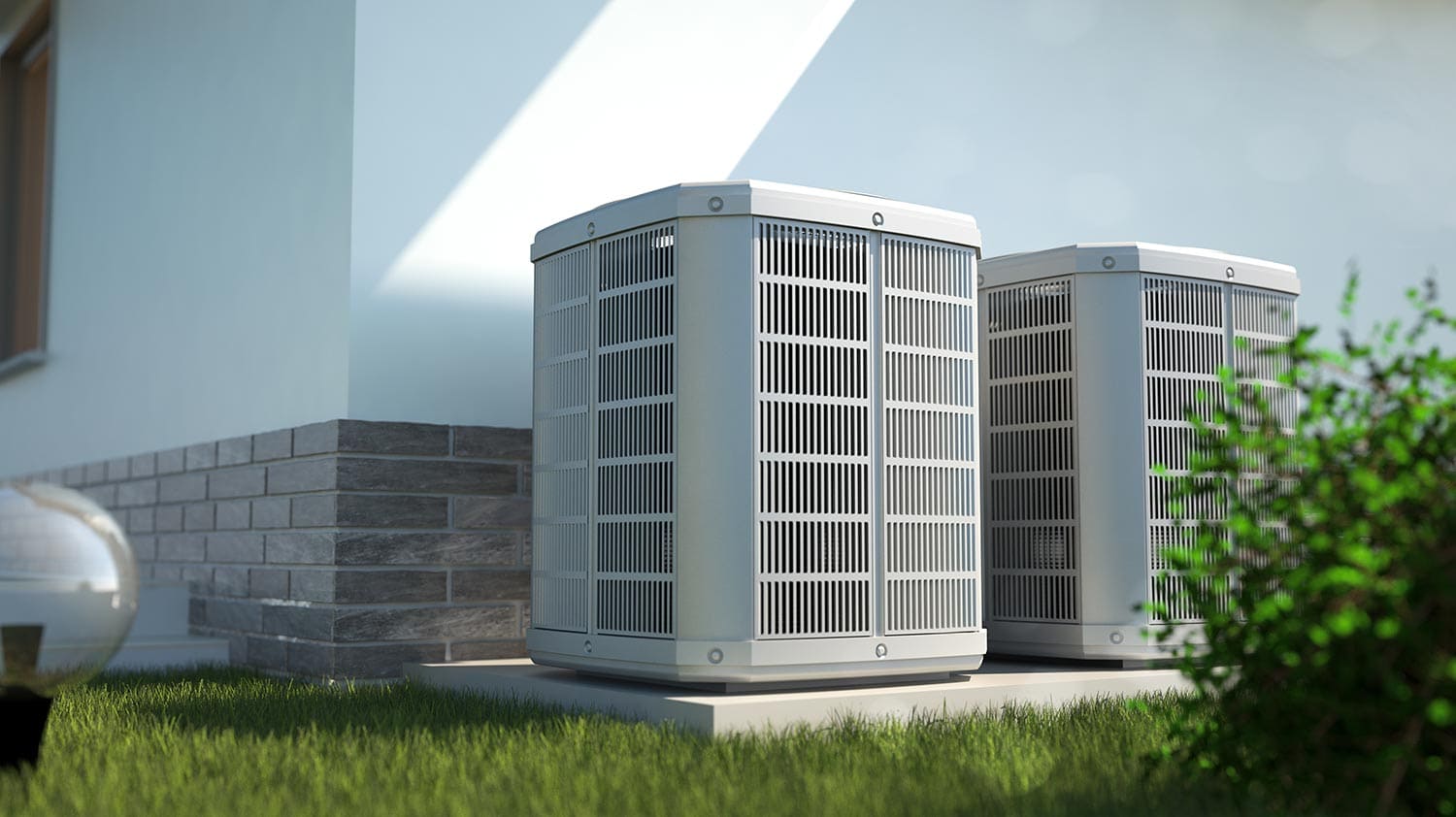If you want to regulate the temperature of your home and water system, utilizing a heat pump would be best. It is a fresh expansion to the house heating sector. But where can we locate a heat pump? Well, we write this post to answer that particular question. We have conducted thorough research to feed your curiosity.
The heat pump's installation is usually outside of your home. It is best to place it in a well-ventilated and dry area outdoors. And you should position this HVAC unit near the ground on one of your property's outer walls.
Although outdoors is the most frequent placement of a heat pump, there are several other considerations that you should know before installing it. And to learn them, we suggest you keep reading. Let's delve into the details!

Heat Pump Location
A heat pump system has two components. And you can find one indoors, and the other one outdoors. The outdoor unit is usually the principal installation of the system.
You can find the indoor unit of a heat pump in a ceiling, exterior wall, or floor of a central location in your home. And the outdoor unit is positioned close to the ground outside of your home.

The indoor heat pump unit is also called the air handling unit. You can typically see it mounted on an exterior wall with direct access to the outside. A refrigerant pipe connects this heat pump component to the external unit. And because of the possibility of connectivity concerns, the two parts should never be more than 50 feet apart.
Furthermore, you can find most air handling units mounted on walls. It is rare to find indoor units on the floor because the convenience is too low. And ceiling-mounted units are typically found in narrower areas encircled by internal walls, such as hallways.
On the other hand, you can generally locate the outdoor unit outside an exterior wall on the property's side or back, practically away from direct sunlight. The outdoor component usually sits on the ground, close to or at ground level. We highly recommend this positioning for the ease of maintenance and repair of the outside heat pump.
Although the above mentioned is the typical heat pump arrangement, particular placement may vary depending on the house structure and, most importantly, the professional assessment during installation. You must install both heat pump parts in well-investigated and well-ventilated areas in your home, as their placement can considerably influence overall performance.
Read more about: "How Long Does It Take To Install A Heat Pump?"
How Do You Recognize A Heat Pump?

As we mentioned earlier, a heat pump consists of two separate components. First is the indoor or air handling unit that looks identical to a gas furnace. The other one is the outdoor unit which looks nearly the same as the outdoor component of a central air conditioner.
The outdoor unit's primary installation comprises the outdoor coil, compressor, reversing valve, and fan. On the other hand, the heat pump's indoor unit includes a supplemental heater, another fan, and the indoor coil.
Finding The Best Heat Pump Location In Your Home

Choosing the best location for your interior unit can be challenging because the external component has a more specific and easy-to-find place.
Although you may place your heat pump unit virtually anyplace in your home, a few aspects can help your temperature control system improve efficiency and performance.
In brief, if you want to make your heat pump can work properly, it needs to be well-ventilated, level, accessible, and protected. In addition, you must ensure that the space you are considering has access to a drainage system and that there are no leaks or drips directly above it before settling on the ideal location you prefer.
Furthermore, even if you install the air handler indoors, you must be aware of the direct sunlight coming through your windows. So, we highly suggest installing the air handler in a location that doesn't come in contact with direct sunlight. Doing so will help your unit avoid future damage and inefficiency.
Lastly, another aspect that you should be aware of is the area's humidity. There are some areas of the house that are more prone to it. You should know that installing the air handler in a dry location would be best. Installing it in a humid area can significantly decrease its efficiency and lifespan.
Read more about: "Where Should A Pool Heat Pump Be Installed?"
How Do You Know If You Have A Heat Pump Or An Air Conditioner

If you buy a new house or rent a new one, you may have difficulty distinguishing whether the outdoor unit is a heat pump or an air conditioner since those two look nearly the same. In addition, it is especially true since they are almost the same in appearance and function.
So to help you out, you can check the guides below to know if the unit you have is a heat pump:
- You should scan the labels indicated in the unit
- Look for an emergency heating option
- Find the reversing valve in the unit
- Listen for a noise distinction
1. Scan The Labels Indicated In The Unit
Examine the unit located outside your home and look for any manufacturer labels. We highly suggest that you always start with this approach because it is the most straightforward and precise way to distinguish your equipment type.
You can typically find the labels on the side panels. And these labels provide additional information, such as the EnergyGuide label, which can help you quickly figure out the nature of the outdoor component.
The yellow EnergyGuide label on your unit will most probably contain all of the information you want. It would be best to check it carefully. And if you see two distinct ratings on the label, one for HSPF and the other for SEER, then your unit is a heat pump.
If the information on the sticker is not adequate, look for the unit's model number. Write the number down and try to look it up in your browser. The exact model and specifications should appear right away. In addition, if you want to get more precise results, you may also need to enter the brand name.
2. Look For An Emergency Heating Option
The emergency heating option feature of a heat pump makes them unique from an air conditioner. If the heat pump unit fails, this feature allows you to switch to your backup heating source. So, you must look at your thermostat and look for any button with an 'Emergency' or 'Em' label.
In addition, you can find this label on the screen of your digital thermostat, if ever you have one. You will know your temperature control system is a heat pump if you find it. However, if you are still unsure, you can opt to try turning on the 'Heat' mode of your thermostat and see if your outdoor unit turns on as well.
If it does, then your unit is a heat pump. And before checking the unit, try to feel the warm air coming via the vents to ensure that the system is functional.
Read more about: When Does A Heat Pump Switch To Emergency Heat?
3. Find The Reversing Valve Unit
A reversing valve is another unique feature that you can find in a heat pump. This one is not available in an air conditioning unit. So, if you are still uncertain, look at the outdoor unit to see if you can find the reverse valve.
First and foremost, ensure to switch the entire system off so the fan can cease rotating and cover your view. After that, look down the grill on top of the heating system for a horizontal bass pipe. And if you can not find it, you have an air conditioning unit.
However, because the reversing valve is sometimes difficult to see or hidden, we recommend trying the previous ideas first, as they are more precise.
Check out this reversing valve replacement on Amazon.
4. Listen For A Noise Distinction
The last suggestion we can give you is to try figuring out your heating system through the noise it delivers. Although it is the least accurate strategy of all the things we mentioned, it can still help confirm the previous tests' outcomes.
Set your thermostat to 'Heat' mode once more. After that, please go outside to see if your exterior unit induces any noise or blowing air. It is often an indication that you are operating a heat pump.
Wrap It All Up
Heat pumps are a relatively new addition to the heating system industry; thus, determining their position and general characteristics can be difficult. But if you keep a few easy concerns in mind, you will be able to figure out how to use this cutting-edge piece of technology in no time.
Thanks for reading this post, and we hope you find it helpful. If you want to read further and get more of our assistance, you are always free to browse our website.

